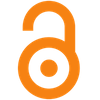 |
Treatment of Micropollutants in Water and Wastewater 
Treatment of Micropollutants in Water and Wastewater

Over the last few years there has been a growing concern over the increasing concentration of micropollutants originating from a great variety of sources including pharmaceutical, chemical engineering and personal care product industries in rivers, lakes, soil and groundwater. As most of the micropollutants are polar and persistent compounds, they are only partially or not at all removed from wastewater and thus can enter the environment posing a great risk to the biota. It is hypothesized that wastewater is one of the most important point sources for micropollutants.
Treatment of Micropollutants in Water and Wastewater gives a comprehensive overview of modern analytical methods and will summarize novel single and hybrid methods to remove continuously emerging contaminants - micropollutants from the aqueous phase. New trends (e.g. sensor technology, nanotechnology and hybrid treatment technologies) are described in detail. The book is very timely because the new techniques are still in the development phase and have to be realized not only in the laboratory but also on a larger scale. The content of the book is divided into chapters that present current descriptive and analytical methods that are available to detect and measure micropollutants together with detailed information on various chemical, biological and physicochemical methods that have evolved over the last few decades.
Treatment of Micropollutants in Water and Wastewater will also enable readers to make well informed choices through providing an understanding of why and how micropollutants must be removed from water sources, and what are the most appropriate and available techniques for providing a cost and technologically effective and sustainable solutions for reaching the goal of micropollutant-free water and wastewater.
The book will be suitable for water and wastewater professionals as well for students and researchers in civil engineering, environmental engineering and process engineering fields.
The PDF version of this title has been made Open Access in partnership with Knowledge Unlatched (KU), a library crowd-funding initiative. Find out more here [1].
Publication Date: 14/08/2010ISBN13: 9781843393160eISBN: 9781780401447Pages: 520 |
Print:
|